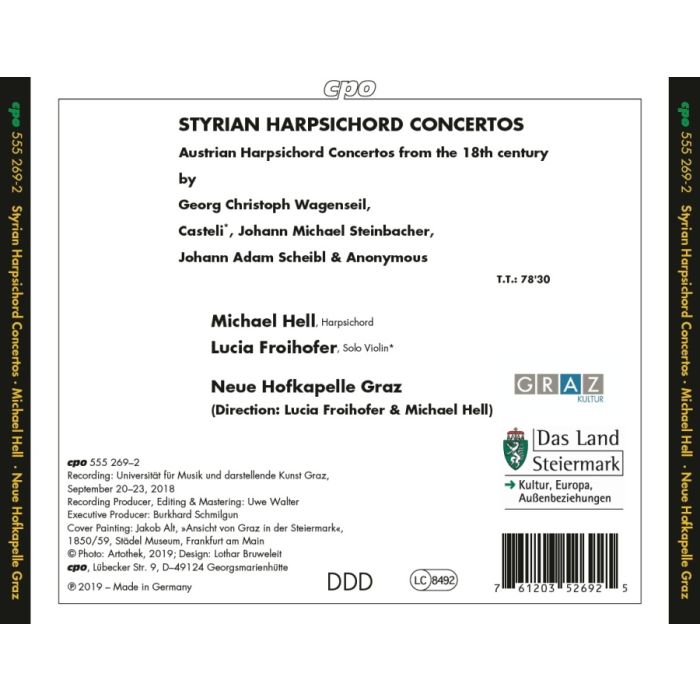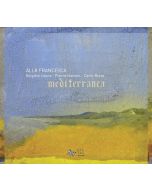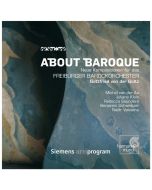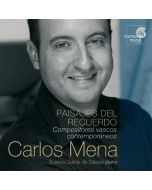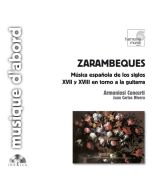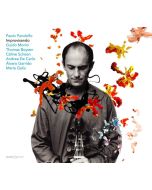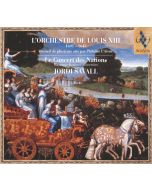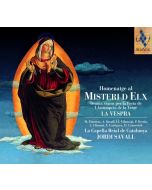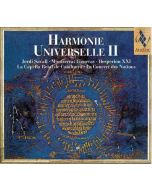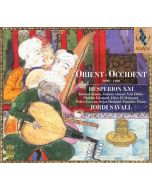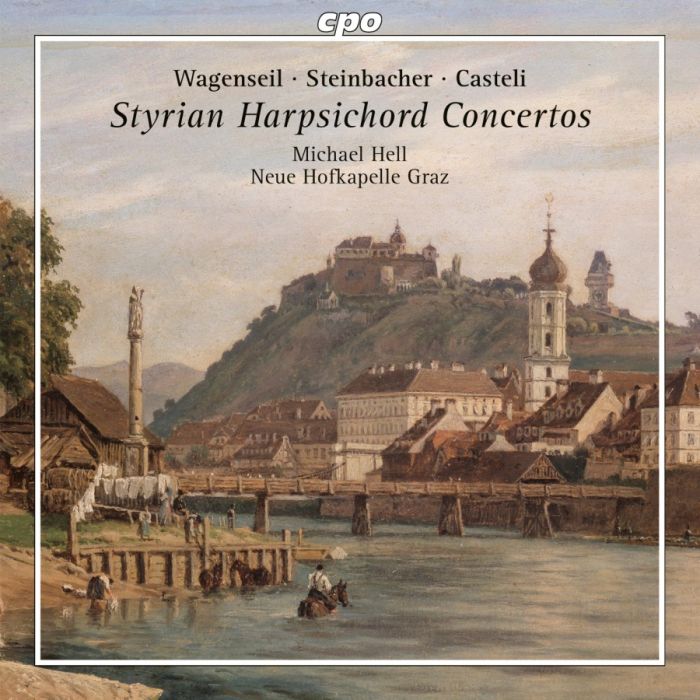
(Produkt nie został jeszcze oceniony)
kompozytor
różni kompozytorzy
tytuł
Styrian Harpsichord Concertos
wykonawcy
Hell, Michael, Neue Hofkapelle Graz
nr katalogowy
CPO 555 269-2
opis
The Early »Clavier Concerto« • The term used to describe the epoch in which the works brought together on this CD were composed is a matter of dispute. Did it come before the period of Viennese classicism, which means that it represents »pre-Classicism«? Or is it part of this period, that is, »Early Classicism«? The Austrian musicologist Rudolf Flotzinger came up with a pithy formulation for this phase of music history, terming it »the epoch between the epochs,« which means that it is no longer Baroque and not yet Classicism. During this period, in the middle of the eighteenth century and in the age of Empress Maria Theresa, the genres of instrumental ensemble music continuing even today to dominate the concert repertoire were developed – including the »clavier concerto,« which was performed in equal measure on the organ, on the harpsichord, and later on the pianoforte. The designation »clavier« current at that time merely generally referred to an instrument with claves (keys). A collection of clavier concertos extant in the Studies Library in Ptuj (Pettau), Slovenia, preserves the compositions recorded here in manuscript form. The harpsichordist Michael Hell, along with the Neue Hofkapelle Graz, led by him and Lucia Froihofer, performs these exciting works. Two highly outstanding instruments were available to Michael Hell for this recording: the harpsichord built by Johann Leydecker in Vienna in 1755, now freshly restored, and its copy built by Martin Pühringer in 2017. • These instruments enable listeners to become acquainted with two instruments forming a perfect match for this repertoire: on an extremely well-preserved original instrument and on a copy that in its way is tonally just as suitable – after all, even during the time of its composition the music was performed on new instruments. The Ptuj collection shows how fragile and incomplete our knowledge of the musical practice from »the epoch between the epochs« really is. The transmitted manuscripts, above all the extant concertos by Wagenseil, document the variety of performance options, broad compositional palette, and widespread dissemination of music for keyboard instruments. Our picture of this epoch would be quite different if the manuscripts had been burnt in the local tile oven!
nośnik
CD x 1
wydawca
CPO
data wydania
30.08.2019
EAN / kod kreskowy
761203526925
58,00 zł
Produkt dostepny w niewielkiej ilości.
Wysyłka w ciągu 3 dni roboczych
Darmowa wysyłka dla zamówień powyżej 300 zł!
Darmowy kurier dla zamówień powyżej 500 zł!
sprawdź koszty wysyłki